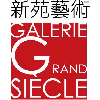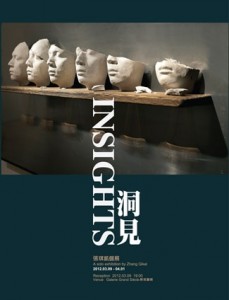 |
Galerie Grand Siecle
1F, No.17, Alley 51,
Lane 12, Sec.3, Bade Road,
Taipei 10559, Taiwan map *
tel: +886 2 2578 5630
fax: +886 2 2578 8659
send email
website
|

Enlarge
|
| Insights
|
|
| by Galerie Grand Siecle
Location: Galerie Grand Siecle
Artist(s): ZHANG Qikai
Date: 9 Mar - 1 Apr 2012
“Insights” is the theme of Zhang Qikai’s new series work which will exhibit at Galerie Grand Siecle in Taipei. “Insights” is extended as Zhang’s new observation, explanation and presentation toward history, reality and life through his form, language and concept. Though Zhang’s creating method has some similarities with “Arte Povera”, he chose to abandon the statement mode which dependence on Chinese context and re-examined contradictions and conflicts between others and himself, inside and outside, central and edge. He turned his artwork into a kind of unique language with his analysis toward history and reality, ordinary and extraordinary, power and freedom. Subjectively breaking and reconstructing original and simple materials, Zhang investigated the social responsibility and aesthetic value.
Because of his personality, quality and the ability to experience art from complicated situation, this time, Zhang focuses his topic on life and time. It’s noteworthy that he used Modernism observation method without Realism presenting way; instead, he started from methodology of Concept Art to analyze the real world. He set tradition, contemporary, order and life to a microscopic point of view and used personal visual language to present the signified of substances. In other words, he didn’t pursue the literary story based on real word but deliver the inner of art and turn up the possibility of art through abstract analogy and metaphor. Like what he said, the art concept has to be broke with reconstruction mode, reconstructed with destruction form and presented with simple attitude.
Zhang just chose several works this time. By simplifying the content of artworks, he used refined materials to generate a new concept. He not only emphasized on the relationship between softness and toughness, nature and artifact, tradition and modern that formed by materials, but gave a metaphor about the contradictions and conflicts between different culture and the relation between life and order, humanity and nature.
In the work, Ink Bird, he made a Ming, Qing Dynasties style wooden chair embed in a broken iron plate and look like it’s ready to come out. There is a woodcarving which is similar with the “Ink Bird” in Bada Shanren‘s painting. The bird stands on the chair, looks supercilious. It’s like it is thinking or questioning about something. It also forms a strong contrast between traditional wooden old furniture and iron plate: One is a traditional symbol and the other is an epitome of modern industry. It brings us a same thinking as “Pendulum”: What do we have and lost? “Pendulum” tried to explore the passage of time and the relation of time. The six disappearing masks are actually six pendulums that kept swaying and it’s just like talking about our past, current and future, all we have is actually nothing.
In these new artworks, Zhang paid attention on the expansibility and plasticity of daily substances and capability. When they were put into society, history, politics, reality and life to build the connection, the physical properties of a substance was deconstructed, translated and generated new meanings, making them as a carrier of concepts and forms. Moreover, they were even seen as a expandable media and had some relation with other stuff: an inner connection with time, memory, reality and experience. Zhang not only redefined property of materials but re-given Anthropological significance of the substance. That is, he stimulated or aroused human’s emotion and memory and gave them their metaphor and symbolization by changing the type of daily materials. He was good at flexibly using materials and the visual language of people’s emotion interaction. In addition, he paid more attention on leading the association with condition, reality, life, custom, history and politics from the relation of those materials.
We can realize the art position that Zhang used to insisted from his new series work, that is, his independent will and critical thinking. He’s the rare artist in the Chinese contemporary art who doesn’t bow to the secular.
Born in Beijing in 1976 and graduated from Department of Oil Painting, China Academy of Art in 1992, Zhang Qikai went studying at Brera Academy in Milan, Italy with scholarship and gained master’s degree in 1990s. He has participated in many domestic and international important contemporary art exhibitions. Recently, he worked and lived in Beijing and Milan. |
|
|
|
|
